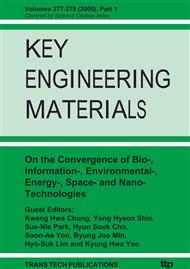p.312
p.318
p.324
p.331
p.337
p.343
p.349
p.355
p.361
SRT Division Based on Redundant Signed Number
Abstract:
SRT division schemes are presented based on a redundant number operand format aiming high speed operation. The proposed SRT division method based on a redundant binary adder (RBA) and one based on a recoded binary signed digit adder (RBSDA) show a 33% and 50% speed improvement, respectively. The time complexity of the proposed division based on redundant number is O(n); importantly, the redundant number based design is easy to implement due to its structural regularity.
Info:
Periodical:
Pages:
337-342
Citation:
Online since:
January 2005
Authors:
Price:
Сopyright:
© 2005 Trans Tech Publications Ltd. All Rights Reserved
Share:
Citation:


